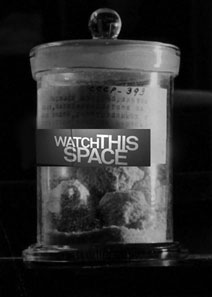
nizkoprophagists (a.k.a. Nizkor) REFUTE PORTER ON EXISTENCE OF NAZI “HUMAN SOAP”

INTRODUCTION
The Nizkoprophagic confusion technique is essentially as follows: If you say “The 1966 COLLIER'S ENCYCLOPEDIA, volume V, p. 176, denies that Caligula made his horse a consul and implies that this accusation was invented because he offended the Jews”, the nizkoprophagists (a.k.a. Nizkor) will look it up and quote verbatim: “Such stores of sheer lunacy as that [Caligula] made his horse a consul are untrue. But though the historical tradition about him deriving from senatorial and Jewish sources is biased, there is no doubt that he was cruel and immoral.” They will then argue, with much sophistry and hair-splitting, that the quote, taken as a whole, constitutes proof of your “Deceit and Misrepresentation".
If you quote verbatim, they will quote a few passages immediately preceding and following: (“[Caligula] was probably an epileptic, and a serious illness six months after his succession greatly affected his character and rule. He became wilful and autocratic, lost his early popularity and earned the particular hatred of the senate at Rome. As emperor, he squandered money on public entertainment in Rome and Italy and on public works, the construction of the bridge of Biase over part of the Bay of Naples being his most spectacular achievement. In his handling of the affairs of the Empire, he greatly offended the Jews. He insulted the Jewish envoys from Alexandria, including the scholar Philo, sent after a serious outbreak of persecution of the Jewish population; and he forwarded but afterward cancelled an order for the erection of his own statue in the temple in Jerusalem. […] Such stores of sheer lunacy as that he made his horse a consul are untrue. But though the historical tradition about him deriving from senatorial and Jewish sources is biased, there is no doubt that he was cruel and immoral, a man who caused widespread offence by his wit, that he was unbalanced after his illness, and that he was, despite his undeniable intelligence, a young man whom absolute power corrupted.”), and then argue that THAT constitutes proof of your “Deceit and Misrepresentation”!
Since the only concern of the nizkoprophagists (a.k.a. Nizkor) is to prove the “Deceit and Misrepresentation” of the “Horse-a-Consul Deniers” regardless of any other consideration (i.e., facts, logic, consistency, truth, etc.) the underlying factual matter remains unresolved, and in fact becomes more mysterious than ever: was Caligula insane or wasn’t he? Did he make his horse a consul or didn’t he? Did he offend the Jews or didn’t he? Are the sources biased or aren’t they? What ARE the sources? Biased or not, what is their value?
The news media -- incapable of the simplest factual or logical analysis -- will simply smear you as a “Caligula-lover”, and leave it at that, or demand your imprisonment for “Denying the Horse-a-Hoax”.
An example of the Nizkor “refutation technique” is provided by the Nizkoprophagic
lie file on the human soap, reproduced as follows (4 parts out of 6).
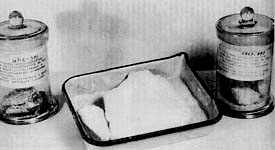
MAIN BODY OF TEXT (my comments in bold)
The Techniques of Holocaust Denial
The Soap Allegations
Part 1 of 6
We begin by examining the arguments made by several revisionist authors
regarding allegations that Nazis made soap from human corpses during the
Second World War. We will see claims from
- Mark Weber,
- Bradley R. Smith,
- Carlos Porter,
- and Richard Harwood and Ditlieb Felderer.
Because "revisionists" often portray the soap allegations as an attack on Germans generally [!],
[COMMENT: The lie of the human soap is like the lie of the gas chambers: it is an insult to the honour of all Germans, and, by illogical extension, to the white race, Western civilization, culture, and Christianity generally]
Nizkor wishes to make one thing clear from the outset. We present information on Professor Spanner and the Danzig soap experiment, not because we feel this isolated case is relevant to the history of the Holocaust as a whole [!],
[QUESTION: So is the human soap accusation true, or isn’t it?]
nor because we believe it is especially important [!] [!],
[QUESTION: Is it important or isn’t it? If it hadn’t been abandoned as an obvious lie many years ago, the nizkoprophagists (a.k.a. Nizkor) would no doubt consider it extremely important. Otherwise they wouldn’t feel compelled to defend it now]
but because the revisionists we cite have attempted to confuse the issue [!] [!] [!].
[COMMENT: We make an issue of it because the accusation was made, and continues to be made. Is the accusation true, or isn’t it?]
They have conflated
[QUESTION: What is conflation? Does it mean blowing up two lie-balloons at once?]
the Auschwitz RIF rumor and the Danzig experiment into one "soap story" [!]
and have presented statements about one or the other as though they referred to both [!].
[COMMENT: The RIF soap story is admittedly untrue, the Danzig soap story is not believed, and has never been believed, by anyone, including Nizkor, who nevertheless profess to “take no position” (see below), presumably because they do not wish to be put in the position of defending something which no one believes. We repeat: is the human soap story true, or isn’t it?]
In order to eliminate this confusion, and to dissect this particular technique of denial [!], it is necessary to explain the evidence regarding the Danzig experiment in some detail.
Nizkor takes no position as to the reliability of this evidence [!] [!] [!],
[COMMENT: See above]
as it is not clear to us whether there is consensus among historians on the issue [!].
[COMMENT: In plain English, this means that the historians don’t believe it; see below]
The reader may make up his or her own mind [!] The important thing is that the evidence does exist, and that the revisionist tracts we shall examine ignore that evidence [!] [!] [!]
[QUESTION: Of what value is the “evidence”? Of what does it consist? Before the revisionists discovered this “evidence”, no one knew it existed, least of all the Niizkoprophagists.]
in an attempt to confuse the lay reader [!].
[COMMENT: Implying that the nizkoprophagists (a.k.a. Nizkor) are the only true experts]
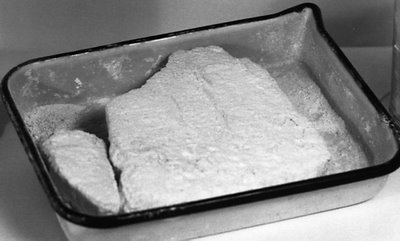
Claims by Mark Weber
Weber's first claim:
One of the most lurid and slanderous Holocaust claims is the story
that the Germans manufactured soap from the bodies of their victims. [...]
More important, this accusation was "proved" at the main Nuremberg trial
of 1945-1946, and has been authoritatively endorsed by numerous historians
in the decades since. [1]
This is not true. What does the Judgment of the IMT actually say?
After cremation the ashes were used for fertilizer, and in some instances
attempts were made to utilize the fat from the bodies of the victims in
the commercial manufacture of soap. [2] (Emphasis Nizkor's.)
Note that the IMT did not say that soap was made from human remains -- on the contrary, they said that the Nazis tried to make soap from human remains [!] [!] [!]. One can attempt something without being successful [!].
[QUESTION: Were the Nazis successful in “attempting” to make human soap,
or weren’t they? Did they make human soap, or didn’t they?]
The IMT also does not say that this attempt was widespread [!].
[QUESTION: Widespread or not, did the Nazis attempt it? If so, were they successful?]
Weber deliberately misinterprets what the IMT said in an attempt to discredit that body's judgements [!].
[COMMENT: In logic, this is what is called a non-sequitur]
Weber's second claim:
...Holocaust historians have grudgingly conceded that the human soap
tale is a wartime propaganda lie. [3]
Contrary to what Mr. Weber has said both here and above, the overwhelming
majority of Holocaust historians have never [!] believed that the Nazis
mass produced human soap [!] .
[QUESTION: How does this simple fact contradict Weber’s statement?]
He is trying to imply that people such as Yehuda Bauer and Deborah Lipstadt have suddenly changed their minds on this issue, especially because of what the revisionists have proved [!] .
[QUESTION: Sudden or not -- did they change their minds or didn’t they? Or didn’t they ever believe it in the first place?]
This is not the case, for Bauer and Lipstadt (and many others) never believed it or mentioned it [!]
[QUESTION: Well, at least that answers the last question: they never believed it. So how does this prove Weber mistaken? This being the case, doesn’t it discredit the IMT judgement to some extent, even a little bit?]
in their published histories of the Holocaust. Even Weber's fellow revisionists Richard Harwood and Ditlieb Felderer contradict him by complaining that many Holocaust books do not mention anything about human soap [!] (see below).
[COMMENT: Perhaps because Weber is right: nobody believes it, they didn’t believe it before, and were, and are, reluctant to discuss it]
Weber's third claim:
Even British prisoners of war interned at Auschwitz in 1944 testified
later about the wartime rumors that corpses of gassing victims were being
turned into soap there. [4]
Actually, the Nuremberg documents contain the testimony of only one
British POW who mentions the soap rumor at Auschwitz. This is what that
POW, Douglas T. Frost, had to say:
The German civilians often threatened the inmates that they would be
gassed and made into soap. We were told that quite a few times by the inmates
and I personally heard the German civilians make those threats many times.
Also I heard the Germans joking among themselves about the same thing.
I didn't take it seriously at first but later I wondered whether it might
not be true after all. Though I have no personal knowledge, I got the impression
that the manufacture of soap from inmates was being done at Auschwitz by
rendering the fat from the gassed bodies. [5] (Emphasis Nizkor's.)
As we shall later see, two British POWs testified to soap production
at the Danzig Anatomic Institute, not Auschwitz
[QUESTION: What is the value of the statement by Frost? How would Frost know about the alleged gassings? Why wasn’t Frost called to appear to be cross-examined as to the source of his knowledge?]
whether Weber has confused [!] these deliberately or accidentally is impossible to know [!] . Those testimonies were of activities witnessed firsthand, indeed participated in -- not reports of rumors. [!]
[COMMENT: NOTE THE ABOVE: “THOUGH I HAVE NO PERSONAL KNOWLEDGE”]
Note that Frost merely testifies to rumors
[QUESTION: So what is the value of Frost’s statement?]
and that Weber deliberately does not mention that Frost placed the blame for the rumors on the Germans who worked at Auschwitz. In fact, we know that human soap was not made at Auschwitz.
[QUESTION: We repeat: what is the value of Frost’s statement?]
In discussing soap taken from Auschwitz, Michael Berenbaum explained
that "The United States Holocaust Memorial Museum tested several bars of
soap reported to be composed of human fat but no such fat was found." [6]
The negative test result was confirmed also in a letter to the present
authors from Steve Friesen of the USHMM, 30 May 1995. But although human
soap was not actually made at Auschwitz, many people there apparently believed
it at the time, and German civilians there taunted inmates
[COMMENT: one
inmate]
that they would be made into soap, as Frost pointed out in his deposition.
Weber's fourth claim:
[Soviet prosecutor] Smirnov quoted at length from an affidavit by Sigmund
Mazur, an Institute employee, which was accepted as Nuremberg exhibit USSR-197.
It alleged that Dr. Rudolf Spanner, the head of the Danzig Institute, had
ordered the production of soap from corpses in 1943. [7]
This is correct: the most damning [!] and vivid [!] description of
the Danzig Anatomical Institute comes from Mazur, who worked there from
January 1941 until the capture of Danzig. Note that Weber does not attempt
to discredit Mazur at all. [!]
[COMMENT: Mazur’s statement is reproduced on this site. It is
a “certified true copy” in which Mazur’s signatures are all typewritten
in Russian, although he had NO knowledge of the Russian language. Is it “damning”
of the Germans, or “damning” of the IMT evidentiary procedures? Is the
statement credible, or not? Nizkor says it “takes no position”. If the Mazur
statement is as “damning”, and “vivid” as they say, why not take a position?
What are the nizkoprophagists (a.k.a. Nizkor) afraid of?]
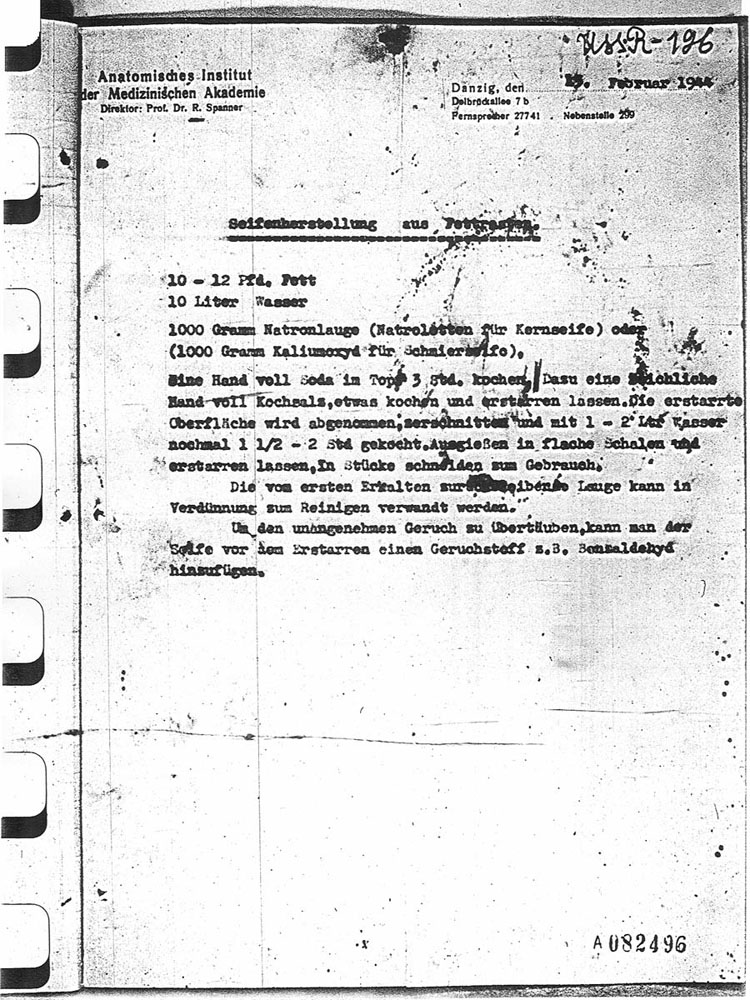
Weber's fifth claim:
A human soap "recipe," allegedly prepared by Dr. Spanner (Nuremberg
document USSR-196), was also presented. [8]
Actually, the "recipe," which is in German, does not contain the word "human" in it, but it was a recipe for soap made from fat typed on the letterhead of the Danzig Anatomical Institute.
[QUESTION: We repeat: is this supportive of the human soap tale, or is it “damning” of the IMT evidentiary procedures?]
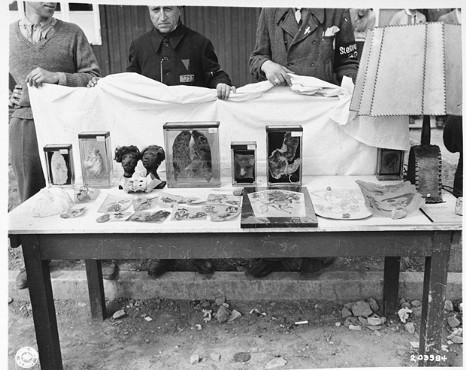
Weber's sixth claim:
Over the years, numerous supposedly reputable historians have promoted
the durable soap story. Journalist-historian William L. Shirer, for example,
repeated it in his best-selling work, The Rise and Fall of the Third Reich.
[9]
What, exactly, did Shirer say?
One Danzig firm, according to a document offered by the Russian prosecution,
constructed an electrically heated tank for making soap out of human fat.
[10]
Notice that Shirer did not endorse, confirm, or "promote" the soap
allegations. Nor does he mention mass production of soap by a factory.
He merely states that there was one firm which made one tank -- according
to an IMT document, USSR-272 to be precise. (The document was the written
testimony of a British corporal and POW, namely William Anderson Neely.)
[!] [!] [!]
[COMMENT: Shirer’s mention of the human soap appears in a footnote;
he mentions the tank, but the reference given is to USSR-8, p. 197, proof
that Shirer hasn’t the faintest idea what he is talking about, since USSR-8
is only about 13 pages long (8,000 words in my translation). Shirer had no knowledge of the Neely
statement and did not refer to it. I located William Anderson Neely in the late 1980s; but he did not choose to elucidate the world as to the human-soap making procedure. See my video, or the book, MADE IN RUSSIA - THE HOLOCAUST]
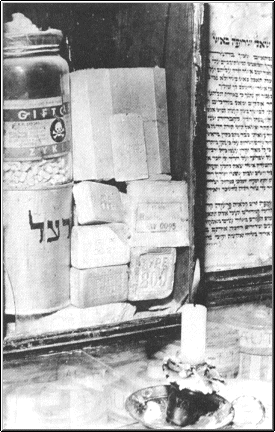
Deceit & Misrepresentation
The Techniques of Holocaust Denial
The Soap Allegations
Part 2 of 6
Weber's seventh claim:
More recently, Jewish historian Walter Laqueur "denied established
history" by acknowledging in his 1980 book, The Terrible Secret, that the
human soap story has no basis in reality. [11]
Weber makes this sentence sound very dramatic, especially since he
insists on mentioning that Laqueur is Jewish, so we should look and see
just what Laqueur actually said: "It emerged after the war that the [soap]
story was in fact untrue." [12]
This was a completely nonchalant [!] sentence from Laqueur, which Weber tried to turn into a dramatic concession [!] and "denial of established history." Laqueur was only saying what several others have said -- that many people believed the soap allegations during the War.
[QUESTION: So was Weber right or not? Did the human soap exist or didn’t it? Was it upheld in the Nuremberg Trial judgement or wasn’t it? The Katyn shootings were not even mentioned in the IMT judgment, because they were known to be a Soviet lie.]
Weber's eighth claim:
Gitta Sereny, another Jewish historian, noted in her book Into That
Darkness: "The universally accepted story that the corpses were used to
make soap and fertilizer is finally refuted by the generally very reliable
Ludwigsburg Central Authority for Investigation into Nazi Crimes." [13]
The first part of that quotation is pure overstatement on Sereny's part: it was never "universally accepted,"
QUESTION: So is the human soap story true, or isn’t it?]

"Human Soap" Monument, Greenwood Cemetery, Atlanta, Georgia
and she should not have phrased it that way. But what is most important
is that Weber neglects to include Sereny's next sentence in his quotation.
She continued:
The Authority has found after considerable research that only one experiment
was made, with a few corpses from a concentration camp. When it proved
impractical the idea was apparently abandoned. [14]
Although Sereny does not provide a citation for her quotation from
the Ludwigsburg Authority, she is clearly stating that the Authority found
that there was an attempt to make soap from human remains, but that it
was given up [!] . Weber deliberately omitted the second half of Sereny's
quotation because it did not fit his thesis. [!]
Weber's ninth claim:
The "RIF" soap bar initials that supposedly stood for "Pure Jewish
Fat" actually indicated nothing more sinister than "Reich Center for Industrial
Fat Provisioning" ("Reichsstelle für Industrielle Fettversorgung"),
a German agency responsible for wartime production and distribution of
soap and washing products. RIF soap was a poor quality substitute that
contained no fat at all, human or otherwise. [15]
Weber is correct that the RIF soap was not made from human remains.
But is it any wonder that people believed it during 1942-45, especially
when Germans were taunting inmates at Auschwitz that they would be turned
into soap? [!]
[QUESTION: Did only one inmate (Frost) make this claim, or more than one? There were millions of Germans and hundreds of hundreds of thousands of inmates at Auschwitz. NOTE THE MANNER IN WHICH THE nizkoprophagists (a.k.a. Nizkor) TURN FROST’S STATEMENT INTO THE PLURAL.]
What is interesting, though, is that Mazur never mentions any initials on the soap that he claimed was made at the Danzig Anatomical Institute
[COMMENT: Of course not; because it is an entirely distinct human soap story, as correctly stated by the nizkoprophagists (a.k.a. Nizkor); see above].
On the photograph of the soap evidence from the IMT, introduced as USSR-393, no initials are present. This photograph is reproduced on page 201 of The Hoax of the Twentieth Century, by Arthur Butz. It is also available at Nizkor: an overview, and a closeup of the soap.
[QUESTION: What is the point? Are we supposed to believe the human soap
story because of a photograph? How about a forensic report? The “soap”
is in the Peace Palace at the Hague, and has only been there for 50 years;
isn’t it time somebody tested the stuff?]
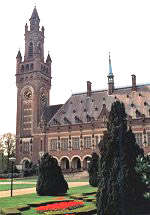
Peace Palace at the Hague
Thus, the RIF soap really has nothing to do with the Danzig Anatomical Institute.
[QUESTION: So why mention it in connection with Sigmund Mazur?]
The rumors that Jewish corpses were being used to make soap began to surface in the West as early as August 1942. [!] [!] [!]
[COMMENT: This is what is politely known as an “anachronism”.]
The Danzig soap evidence is all dated 1944: Mazur testified that Spanner gave him the soap "recipe" in February 1944 (IMT document USSR-197), the recipe from the Danzig Institute is dated February 15, 1944 (USSR-196), William Neely's testimony stated that the soap tank was installed in March or April 1944 (USSR-272), and so on.
Himmler himself was disturbed by the rumors that bodies of Jews were being used for soap and/or fertilizer, since the Nazis' extermination plans demanded strict secrecy. On November 30, 1942, after Rabbi Stephen Wise mentioned the soap rumors to the press in New York City on November 24,
[COMMENT: How strange that anything mentioned by Stephen Wise in 1942 should automatically come to pass in 1944, and become “proven fact” in 1945, a “proven fact”, insofar as the human soap is concerned, which has nevertheless never been believed by anyone, but if the revisionists mention it, it is suddenly “true” after all.]
Himmler wrote to Heinrich Müller, head of the Gestapo:
In view of the large emigration movement of Jews, I do not wonder that
such rumors come to circulate in the world.
We both know that there is present an increased mortality among the
Jews put to work. You have to guarantee to me that the corpses of these
deceased Jews are either burned or buried at each location, and that absolutely
nothing else can happen with the corpses at any location.
Conduct an investigation immediately everywhere whether any kind of
misuse [of corpses] has taken place of the sort as listed in point 1, probably
strewn about in the world as a lie.
Upon the SS-oath I am to be notified of each misuse of this kind. [16]
It is clear, then, that the RIF soap allegations were merely a rumor,
even though many people believed it at the time. But the RIF soap rumors
have nothing to do with the allegations regarding Professor Spanner's possible
experiments at the Danzig Anatomical Institute. What Himmler's letter does
imply, though, is that if Spanner used Jewish corpses (which has never
been claimed or documented), then Himmler should have known about it.
[!]
[COMMENT: This is so confusing that any comment is simply superfluous.
Did the human soap exist, or didn’t it? We don’t care “whom” they made it
out of. Did they make human soap, or didn’t they?]
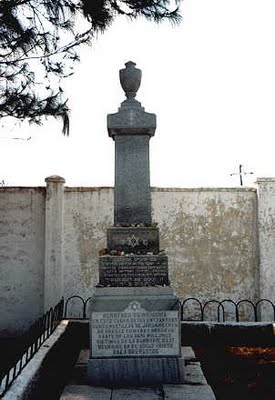
"Human Soap" Monument, Ashkenazi Cemetery, Havana, Cuba
Weber's tenth claim:
Shortly after the war the public prosecutor's office of Flensburg,
Germany, began legal proceedings against Dr. Rudolf Spanner for his alleged
role in producing human soap at the Danzig Institute. But after an investigation
the charge was quietly dropped. In a January 1968 letter, the office stated
that its inquiry had determined that no soap from human corpses was made
at the Danzig Institute during the war. [17]
Actually, Spanner was investigated twice by German authorities: in
Hamburg (1947) and in Flensburg (1947-48). Both times he was not prosecuted.
Does that mean that he was completely innocent, or that there was not enough
evidence to proceed with a case? [!] One would need to read the complete
file on Spanner from the Flensburg Public Prosecutor's Office to understand
fully the reasons for the cases being dropped [!] .
[COMMENT: Note that all Germans are assumed guilty until proven innocent,
and that even when proven innocent, that is still not enough, the John
Demjanjuk case in Israel being only one example (huge mobs of Jews outside
his house screaming, spitting, and blowing on ram’s horns, etc.). Why not
apply the same logic when accusations are made against Jews? How about
the Bayliss “ritual murder” case in Czarist Russia, as described by Julius
Streicher? Bayliss was allegedly acquitted, not because there was no ritual
murder, but because it was not known which defendant was guilty.]
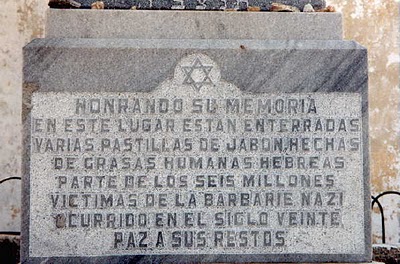
Partial translation:
"Here lie buried several bars of soap manufactured from the bodies of Jewish human beings, some of the six million victims of Nazi barbarism"
Weber's eleventh claim:
He [Yehuda Bauer] had the chutzpah to blame the [soap] legend on the
Nazis. [18]
Douglas Frost has already been quoted above from his Nuremberg testimony
that Germans taunted Auschwitz inmates [COMMENT: ONE inmate] that
they would be turned into soap. Because of testimony such as Frost's,
[QUESTION: Are there any other testimonies, or is Frost’s the only one?]
Professor Bauer believes that the Nazis "used [soap threats] as a form of additional sadism, in words this time, on their Jewish victims." [19]
In reading Mark Weber's article, it is clear that he is deliberately overstating the belief in the soap allegations among what he calls "exterminationist" historians, so as to make his debunking of it seem that much more important and dramatic.
[QUESTION: So was it believed, or wasn’t it? Was the charge upheld in
the IMT judgement or wasn’t it? Is the evidence supportive of the
human soap accusation (the Mazur statement, Neely statement, Witton statement,
the jar of “human soap”, the “human soap recipe”, etc. etc.) worthy of
belief, or isn’t it? Do historians believe that evidence, or don’t they?
If not, why not?]
In truth, most historians do not believe [!]
[QUESTION: If they don’t believe it, does that mean that the evidence in favour of it cannot be believed? In this case, why were the human soap making “attempts” upheld in the IMT judgement? That being the case, what is the credibility of the IMT generally?]
that soap was mass produced from human remains (most of those who even mention the soap allegations at all in their writings are survivors who either actually saw the "RIF" soap, or who were taunted by the Germans that they
[COMMENT: Note the plural again]
would be made into soap). No matter what we know now, it was widely rumored [!] during the Second World War that soap was being (and even Himmler heard the rumors) [!] , so we can forgive the victims of the Nazis for believing that their persecutors would do such a thing [!] [!] [!]
[COMMENT: The same logic applies equally well to the steam chambers, vacuum chambers, quicklime chambers, quicklime trains, and gas chambers.]
Konnilyn Feig, writing in Hitler's Death Camps, is one of the few [!] historians who argue that the Nazis made human soap.
[QUESTION: Why don’t the others believe it?]

Human soap monument in Jewish cemetery, Sighetu, Roumania
In his article, Weber overstates support for the soap allegations and attempts to build up this straw man so he can dramatically tear it down, and thereby hopefully cast doubt on the Nuremberg proceedings and the entire Holocaust [!] [!] [!] .
[COMMENT: Whatever does not fit the Nizkoprophagic case to a "T" is a “straw man”.]
Whatever doesn't fit into his thesis is either glossed over (the Frost statement), misstated (the Judgment of the IMT) [!], or omitted (Sereny's full quotation). [!!!]
Weber also fails to differentiate between the various soap allegations [!] . He is correct in asserting that RIF soap was not made from human remains [!] . He is correct in asserting that there were no "soap factories" which mass-produced soap from human remains [!] .
But he fails to address or respond to the affidavits of Sigmund Mazur, William Neely, or the second British POW, John Witton [!] All three worked at the Danzig Anatomical Institute. Weber merely states that Rudolf Spanner was cleared in 1948. But does the fact that a German prosecutor immediately after the War failed to bring charges against a prominent German academic mean that professor was necessarily innocent? [!] [!] [!][!] [!] [!]
[QUESTION: Why not? Enough other Germans were convicted in obvious miscarriages
of justice. For instance: 10 years imprisonment for slapping an Allied
bomber crew member who parachuted after incinerating thousands of German
women and children in incendiary bombing attacks in violation of all international
law; these miscarriages of justice are still continuing, 55 years after
the war.]

Ash and Soap Exhibit in the " Holocaust Chamber", Mount Zion Foundation, Jerusalem
Excerpt from inscription:
"Ashes and Soap from the Jewish Martyrs whose dying words proclaimed their faith in the coming of the Messiah"
---
Part 3 of 6
Claims by Bradley R. Smith
Smith's first claim:
The Encyclopedia Judaica (New York City, 1971) contains a photograph
of the inside of a German soap factory. Titled "A German soap factory near
Danzig," the photo accompanies the Encyclopedia's article on Poland. ...The
photograph is not sourced, but who would want to doubt the intellectual
integrity of the publishers of the Encyclopedia Judaica? [20]
Indeed, the integrity of the publishers is beyond question; the sources
are readily available. Actually, there are two photographs of the interior
of the Danzig Institute on those pages of the Encyclopedia (vol. 13, pp.
761-762). The two photographs were first published (along with a third)
in Zaglada zydostwa polskiego: album zdjec, ed. Gerszon Taffet (Lodz: Centralna
Zydowska Komisja Historyczna w Polsce, 1945) [!] , p. 96.
According to that book's Introduction:
The photographs contained in this album are only a part of the photographic
documents in possession of the Central Jewish Historical Committee in Poland.
The photographs also appeared in Mydlo z ludzkiego tluszczu: alfa i
omega niemieckich zbrodni w Polsce, by Stanislaw Strabski (Poznan: Wydawnictwo
Zachodniej Agencji Prasowez, 1946) [!] . There are other photographs of
the interior and exterior of the Danzig Institute in Polish Monthly Review,
no. 1 (Aug. 1945) [!]: 22-23; and in Het boek der kampen, by Ludo van Eck
(Leuven: Kritak, 1979), pp. 247-252.
[QUESTION: How does this discredit or disprove Smith’s statements? Parenthetically, one would have to be very far to the left to believe this sort of evidence, produced, with one exception, in a Communist country in 1945. Why did millions of dedicated, intelligent people leave the Communist party all over the world long before 1945? Answer: because of the Stalinist purges, deportations, show trials, artificial famines, etc. during the 1930s. See, for example, THE GOD THAT FAILED, by Richard Crossman (essays by six ex-Communists: Arthur Koestler, Richard Wright, André Gide, Ignazio Silone, Louis Fischer, and Stephen Spender); THE YOGI AND THE COMMISSAR; DARKNESS AT NOON; ANIMAL FARM; REFLECTIONS ON THE FAILURE OF SOCIALISM by Max Eastman; THE RED DECADE by Eugene Lyons; and many other excellent books, many, if not most, of them by Jewish ex-Communists. See also THE GREAT TERROR, by Robert Conquest, or ASSIGNMENT IN UTOPIA, by Eugene Lyons. Most of these books are available used from www.alibris.com. THE GREAT TERROR has been revised and the new edition is called THE GREAT TERROR - A REASSESSMENT. See also THE BLACK BOOK OF COMMUNISM, available from www.jbs.com. Probably the best book list on Communism, feminism, race, and the Jews is to be found at www.natvan.com.] * [see also book list below]:
Smith's second claim:
At Nuremberg the human-soap indictment against the Germans was upheld.
Smith is half-correct. As quoted above in the section on Mark Weber's
first claim, the Judgment of the IMT actually says that "attempts were
made." [!]
[QUESTION: “Attempts” which were successful according to the “evidence”,
but which nobody has ever believed except Nizkor, although Nkzor “takes
no position” on the matter. What is proven by the above?]
Smith's third and fourth claims deal with Yehuda Bauer. His third claim:
Yehuda Bauer has told a Holocaust memorial meeting for "Yom Hashoah,"
the yearly Jewish celebration of German bestiality, that the Jewish soap
story isn't true after all.... He says that the "technical possibilities" for rendering soap from the cadavers of murdered Jews were not yet understood
during World War II. Do you suppose it's been worked out since?
What, exactly, are Professor Bauer's views regarding the soap allegations?
After he was quoted in several newspapers (including the Jerusalem Post,
May 5, 1990; Chicago Tribune, Apr. 25, 1990; and Northern California Jewish
Bulletin, Apr. 27, 1990) that the "technical possibilities for transforming
human fat into soap were not known at that time,"
[QUESTION: So how does this contradict the claim by Smith?]
Bauer later explained that he was discussing the industrial production
of human soap. In a follow-up letter to the editor of the Jerusalem Post
(included as an Appendix to this document), Bauer wrote regarding the Danzig
experiment:
It emerges very clearly that this was a first and unique experiment
and that it was in its experimental stages. The bodies used may have been
those of prisoners of war and forced labourers from the immediate vicinity.
It is also clear that had the war continued, the Nazis were certainly capable
of turning this into another mass horror.
There was no industrial production....
[QUESTION: Was there any production at all? Were the "attempts" succssful,
or weren’t they?]
Thus, Bauer is convinced that there was a preliminary experiment performed by Spanner at Danzig. [!]
[QUESTION: Does Bauer believe in the existence of the human soap, or doesn’t he? Did it exist, or didn’t it? In the former case, does it still exist? If it does not, what is contained in the bottle at the Peace Palace at the Hague? Is the “human soap” evidence credible, or isn’t it? If it is credible, why don’t most historians believe it? If it not credible, why don’t the nizkoprophagists (a.k.a. Nizkor) admit it? ]
Smith's fourth claim:
Why did Yehuda Bauer choose to deny the Jewish soap hoax this year
rather than last year or the year before? Or ten or even twenty years ago.
As mentioned above in the Mark Weber section, most Holocaust historians
have never [!] believed the allegations concerning mass production of human
soap [!] ,
[QUESTION: How does this answer the question raised by Smith?]
especially as they have been "presented" by revisionists, who confuse the Danzig experiment with the R.I.F. soap rumors [!] .
[QUESTION: Was the Danzig “experiment” successful, or wasn’t it? Does the story of the Danzig “experiment” represent the truth, or was it just another “rumour”?]
As Smith pointed out earlier in his chapter, Deborah Lipstadt did write a letter to the editor of the Los Angeles Times on this topic. [21] And Yehuda Bauer has been quoted on this topic. The rational explanation as to why historians periodically mention this issue in public is because members of the public continue to bring it up. During 1995 alone, there were at least two attempts to sell "human soap," once in Israel and once in Poland. [!] [!] [!]
[QUESTION: Is the story credible, or isn’t it? If it is untrue,
but if “human soap” continues to be peddled for hard cash, is the evidence
of its existence credible or isn’t it? Were the above mentioned attempts
to sell “human soap” undertaken by Jews, or by somebody else? Is this why
Julius Streicher called the Jews a “nation of bloodsuckers and extortionists”?
Or is there some other reason?]

Thrill to "Holo-Land"
Fun For the Entire Family
---
The Soap Allegations
Part 4 of 6
Claims by Carlos Porter
Porter's first claim:
In 1946, it was a "proven fact" that Nazis made human soap (Judgement,
Nuremberg Trial, IMT I 252; VII 597-600; XIX 506; XXII 496). [22]
As we have already mentioned above in the sections on Weber and Smith,
the Judgment of the IMT actually says that "attempts were made," not that
soap was made [!] , and it also specifically says "in some instances":
not a large-scale program [!]
[QUESTION: If it was true in “some instances”, then why don’t most historians believe the story at all? The question remains: did the Germans make human soap, or didn’t they? Is the “human soap” in the Peace Palace of the Hague authentic, or isn’t it? Is the Mazur statement credible, or isn’t it? The Mazur statement does not indicate that the “experiment” was “unsuccessful”; quite the contrary.]
Note that the point Porter is trying to make here is that things which were proven at Nuremberg have been retracted later by historians. Since, as we have seen, historians repudiate the "RIF" soap rumor but not the Stutthof/Danzig evidence[!] [!] [!], Porter's point is not supported. [!] [![ [!]
[QUESTION: Do historians accept the Stutthof evidence, or don’t they? Did the Germans make human soap, or didn’t they?]
Furthermore, Porter cites four sections of the trial record to back him up on the matter of "proven fact." He correctly points out that I-252 is the Judgment, but neglects to mention that XXII-496 is the same text, just in a different place [!].
[COMMENT: I have explained the importance of reading the judgement in Volume XXII in German; what is the relevance of the above?]
VII-597 through 600 is the Soviet prosecution's introduction of the evidence,
[QUESTION: Is that evidence credible, or isn’t it? The question is of some importance, since ALL the human soap evidence is of Soviet origin]
and XIX-506 is simply a reference to that evidence by the British prosecution. In short, not one of these quotes backs up his claim. [[!] [!] [!] [!]
[COMMENT: In logic, this is what is called a non-sequitur.]
Porter's second claim:
They [The Hague] have the "human soap," which has never been tested,
and the "original human soap recipe" (Document USSR-196), which is a forgery;
but apparently no original wartime German documents. [23]
Since Porter claims that virtually every Nuremberg document that shows
a German in a bad light is a forgery [!],
[COMMENT: That is not true. It is the responsibility of the prosecution in a criminal trial to prove the authenticity of the documents which it introduces into evidence. Is it not my responsibility to prove that everything is a forgery. What is the value of “evidence” introduced in a “trial” in which something like USSR-197 or USSR-470 or R-135 could even be considered? What is the value of a “trial” in which such “evidence” could be considered?]
it would be impossible to change his mind in this regard. Notice that he does not show how or why the soap recipe is a forgery [!] .
[COMMENT: I was hoping the nizkoprophagists (a.k.a. Nizkor) would ask me that; I was just waiting for it. The reason I say that the “human soap” recipe is a forgery is because it is an impossible way to make soap, and whoever wrote it knew very little about soap making, human or otherwise The document has been analyzed by chemist Robert Frenz of Buffalo NY.]
In Sigmund Mazur's deposition of 11 June 1945 (USSR-197), which Porter even
[COMMENT: Note the emphasis, as if it were perfectly credible]
includes as Appendix I in his other book, Made in Russia: The Holocaust,
Mazur confirmed that the recipe in possession of the Soviet interrogator,
which would later be introduced to the IMT as USSR-196, was the one he
knew from the Danzig Institute:
Question: You have been shown a recipe typed in the letterhead of the
Anatomical Institute. What do you have to say in respect of this recipe?
Answer: The recipe shown to me, dated 15th February 1944, is the same
recipe about which I have just testified. This recipe was stuck to a plywood
board which hung in the building where soap was prepared. [24]
[COMMENT: What is the point? If we are to believe the Mazur statement,
why don’t historians believe in the story of the human soap?]
Porter's third claim:
Since the affiants almost never (if ever) wrote their own "statements,"
it is common to find identical or nearly identical phrases or even entire
paragraphs occurring in different documents, even when they have been prepared
on different days by people; for example, ... Documents USSR-264 and 272
(human soap affidavits). [25]
Porter makes this sound sinister and conspiratorial, but there is a
rational explanation for why USSR-264 (affidavit of John Henry Witton,
3 January 1946) and USSR-272 (affidavit of William Anderson Neely, 7 January
1946) might contain similar phrases and/or terminology.
The first thing to point out is that both affidavits were given to
the British Judge Advocate General's Office, not to the Soviets. But even
though both of these documents were witnessed by different members of the
JAG Office, it is likely that both men were deposed by the same interviewer
-- i.e., someone familiar with the Danzig Institute who could ask relevant
questions -- especially since the two former POWs gave their affidavits
only four days apart, at 6, Spring Gardens in the City of Westminster.
[COMMENT: At the risk of appearing immodest, I should like to say that before I published this “evidence” in 1988, nobody knew it existed, but here are the nizkoprophagists (a.k.a. Nizkor) quoting it against me just if they had known about it all the time. Who found William Anderson Neely 30 years after the war? I did, and it wasn’t easy. I will discuss the value of these affidavits below.]
Porter's book, Made in Russia: The Holocaust, contains what we will
call his fourth claim:
Of the two British human soap witnesses -- signers of mutually contradictory
hearsay affidavits prepared with the help of other people -- John Henry
Witton has apparently emigrated, while William Anderson Neely lives in
Scotland. He has declined to discuss his experiences, and appears unaware
that his story could make him wealthy. [26]
As usual, Porter merely brushes aside Nuremberg documents without offering
any proof [!] to back up his assertions
[COMMENT: The burden of proof is upon the accuser. Space is limited. I don’t have the ADL to subsidize my printing costs and pay my phone bills, research costs and living expenses. Nor am I allowed to launder "tax deductable" donations through B'nai Brith for a 5% cut.]
A close examination of both affidavits reveals only two "contradictions" [!]:
[COMMENT: There are many, many more, probably two dozen. The Witton and Neely statements have nothing in common with the Mazur statement and neither mentions Mazur as the person who made the soap, although both men knew Mazur.]
1. Number of corpses: Witton stated that corpses "arrived at an average
of 7 to 8 per day," with sometimes 5 to 6 in a Red Cross wagon and sometimes
3 to 4 in a small truck. Neely, however, said that corpses "arrived at
an average rate of 2 to 3 per day."
1. Length of preparation time of corpses: Witton stated that after
fluids were inserted into the corpses, they "were then put into large metal
containers where they were then left for approximately 4 months." Neely,
however, said that the corpses were "kept for an average of three to four
weeks in large tanks before being taken upstairs and used for dissection
purposes."
What might be the possible explanations for these two apparent contradictions? One idea might be that the second one could just be a typo, where "months" was substituted for "weeks," or vice versa. But this is unlikely; the most logical explanation is that Witton was correct and Neely was wrong.
[QUESTION: Wouldn’t this be rather inefficient? Four months for a few kilos of soap? It’s a bit like going to Brazil to get coffee beans for a cup of coffee]
In his affidavit, Neely wrote: "I myself was employed in taking the corpses down to the cellar and laying them on the tables in the dissecting room and also in clearing them away at the end of the day." Perhaps Witton was much more involved in the process at the Danzig Institute than Neely was and therefore saw more corpses than his fellow POW did. This might also explain the discrepancy in the length of time, if Witton knew more details about the entire process than Neely did.
Aside from these two "contradictions," the rest of the two statements are in accord with each other.
[COMMENT: That is very far from the truth.]
But it is really not surprising that their statements are not identical, since both men had been POWs for over four years, obviously traumatic events in their lives.
More importantly, it would have been more suspicious if their affidavits were exactly alike. In fact, Porter charged this as well:
[COMMENT: That is true. The phraseology is nearly identical; but the content is contradictory. Why not obtain the Neely and Witton statements from the Library of Congress or the Peace Palace of the Hague and see for yourself? We repeat: if these statements are to be believed, why don’t historians believe the story of the human soap? Is the human soap story credible, or isn’t it?]
In one of his books, Porter complained that the two statements contained too many of the same phrases to be trusted, and in his other book he said they were too contradictory!
[COMMENT: For a more detailed discussion, see my video MADE IN RUSSIA, produced in 1988 by Ernst Zündel. Space and time were lacking there as well; it is best to obtain the documents and read them.]
Finally, since both men worked in the Danzig Institute, their statements are not "hearsay." [!] [!] [!]
[COMMENT: Hearsay is an “out of court statement offered to prove the truth of the matter stated” (Definition: CRIMINAL LAW ADVOCACY, Matthew Bender Publishers, NY). Hearsay achieves no added dignity by being written down.
All 3 “human soap” statement -- Mazur, Neely, and Witton -- are written hearsay, in addition to which, the Mazur statement is not even signed by Mazur! All signatures by Mazur are typewritten.
Neely and Witton prepared corpses for dissection in an anatomical institute (a perfectly normal non-criminal function) and had nothing -- I repeat , NOTHING -- to do with the preparation of any “human soap”. They stated that they were TOLD that the fat removed from the corpses was turned into soap, and were furthermore TOLD that the soap was EXCELLENT for the purpose. These statements are “hearsay” by any definition of the word. Finally, if the soap was “excellent for the purpose”, then the human soap making “experiment” was “SUCCESSFUL”. In that case, why don’t historians believe it?
I repeat: the “human soap” allegation is based on 3 mutually contradictory
out of court statements -- i.e., they are written hearsay -- and one forensically
untested jar of “human soap” introduced by the Soviets. The nizkoprophagists (a.k.a. Nizkor)
do not even claim that they believe this evidence to be true -- no one believes it -- but the revisionists are wrong anyway. Neely and Witton
were available to testify but never appeared in court; neither did Mazur;
perhaps he was in Siberia. The only way we know he existed is because Neely
and Witton mentioned him. Why didn’t Neely and Witton appear?

"Human Soap Land"
3 Rides for 5 bucks
---
I have a very great mistrust of “sworn statements” and “affidavits”,
particularly when prepared by prosecutors or the police. I’ve signed “sworn
statements” on at least half a dozen occasions. I was a witness, not a
suspect; my interrogators were not hostile to me, and had no preconceived
notion of what they wanted to hear. Yet I always noticed that they NEVER
WRITE DOWN WHAT YOU SAY. They always write something completely different
in their own crazy jargon, often completely distorting what you say, and
ALWAYS leaving out something that you think is important. They really seem
to think that they know better than you do what you saw, and what you experienced.
This is the conceit of the professional who thinks that no layman can describe
anything correctly.
When they finish writing up your “statement”, THEY NEVER READ IT TO YOU. They simply summarize it and ask you to sign. They become visibly annoyed if you insist on reading it carefully, and if you insist on changing more than one or two things, they get mad and say they haven’t got all day to rewrite the thing. So in the end, you end up signing it, even if it is a load of rubbish.
This is particularly stupid of them when you reflect that they know perfectly well that when you appear in court, you are going to tell your story in your own words, just the same way you told it in the first place, at which point your “pre-trial affidavit” will be introduced into evidence against you as a “prior inconsistent statement”, thus defeating its own purpose (assuming that its purpose is to discover the truth). All lawyers know this and exploit it to the full.
The system works this way: if you say “I got out of my car and this guy with some fuzz on his face came up to me, his face was kind of hairy”, your interrogator will write “I exited my vehicle and was accosted by a bearded individual”, or some other such gibberish. If you say that’s not right -- he had some hair on his face, but it wasn’t really a beard -- you may well be told that you’ve got to describe him as bearded or clean-shaven, this is the third correction you’ve made so far, we haven’t got all day, so which is it? So you sign it. Later you appear in court and testify that the suspect had some facial hair but no beard. Your “sworn statement” is then introduced into evidence against you as a “prior inconsistent statement” to prove that you are mistaken in your present identification. YOU WILL NEVER BE ALLOWED TO EXPLAIN WHY YOU SIGNED A STATEMENT SAYING THE SUSPECT HAD A BEARD. Even if your own lawyer brings this out on “re-direct”, the damage is done: the court will think you are unreliable.
The result of this system, if you appear in court to testify (as is the rule in ordinary criminal cases), is that a defendant with “fuzz on his face” may be acquitted of a crime which he actually committed.
If you do NOT appear in court to testify (as is the rule in “war crimes trials”, which are not conducted according to “technical rules of evidence”), the result may well be that a “bearded individual” will be convicted of a crime he never committed.
It is hard to conceive of a system more unreliable or more unfair than
trial by “affidavit”, without the personal appearance of the witnesses,
particularly where the interrogators are in a position to intimidate the
witnesses.
The fact of the matter is that the human soap accusation was made; that nobody believes it; and that it was a lie. How many other lies are there?
What is proven by a “trial” in which Soviet “copies” are accepted instead of original documents, in which “sworn statements” are introduced instead of witnesses, and in which 312,022 statements for the defence were “rebutted” by “7 or 8” “sworn statements” for the prosecution? (Note: it is obvious that the defence at Nuremberg were in no position to intimidate their witnesses, but that the prosecution was.)
See also NOT GUILTY AT NUREMBERG
In English
In German
CARLOS W. PORTER
22 FEBRUARY 2000
* More assorted books on Communism: How reliable is Communist "evidence", on "human soap" or anything else?
Naked Communist by Leon Skousen
Naked Capitalist by Leon Skousen (should be read together wtih Tragedy and Hope by Carroll Quigley)
Roosevelt's Folly: How FDR and His New Deal Prolonged the Great Depression by Jim Powell
Venona: Decoding Soviet Espionage in America by John Earl Haynes and Harvey Klehr
In Denial: Historians, Communism and Espionage by John Earl Haynes and Harvey Klehr
The Venona Secrets: Exposing Soviet Espionage and America's Traitors by Hubert Romerstein and Eric Breindl
The Haunted Wood: Soviet Espionage in America: The Stalin Era by Allen Weinstein and Alexander Vasilliev
Joseph McCarthey: Reexamining the Life and Legend of America's Most Hated Senator by Arthur Herman
Masters of Deceit by J. Edgar Hoover
The Rosenberg File by Joseph Radosch and Joyce Milton
Bombshell: The Secret Story of America's Unknown Spy by Joseph Albright, Marcia Kunstel
Black Book of Communism: Crimes, Terror Repression, Stephane Courtois
Russia Under the Bolshevik Regime by Richard Pipes
Harvest of Sorrow: Soviet Collectivization and the Terror Famine by Robert Conquest
Revolution From Abroad: The Soviet Conquest of Poland's Western Ukraine and Western Byelorussia by Jan Tomasz Gross
The Anti-Humans by Dumitru Bacu
Voices from the Gulag: Life and Death in Communist Bulgaria by Tsvetan Todorov
The Aquariums of Pyongyang: Ten Years in the North Korean Gulag by Kang Chol Hwang
The Great North Korean Famine by Andrew N. Natsios
Inside North Korea by Norbert Vollersten
Cambodia 1975-1978 by Karl D. Jackson
When the War Was Over: Cambodia and the Khmer Rouge Revolution by Elizabeth Becker
Voices From S-21: Terror and History in Pol Pot's Secret Prison by David Chandler
The Bamboo Gulag: Imprisonment in Communist Viet Nam by Nhgia N Vo
Scarlet Memorial: Tales of Cannibalism in Modern China by Yi Zheng
Hungry Ghosts: Mao's Secret Famine by Jasper Becker
Eighteen Layers of Hell: Stories from the Chinese Gulag by Kang Chol-Hwan
Ta Ta, Tan Tan (“Fight, Fight, Talk Talk”): The Inside Story of Communist China, by Valentin Chu
Political Pilgrims: Western Intellectuals in Search of the Good Society by Paul Hollander
Against All Hope: A Memoir of Life in Castro's Gulag by Armando Valladares
A Century of Violence in Soviet Russia by Alexander N. Yakoflev
The Nation Killers by Robert Conquest,
None Dare Call It Treason
None Dare Call It Treason 25 Years Later, etc. etc. etc.
P.S. See also my answer to Kevin Strom, under “Letters".
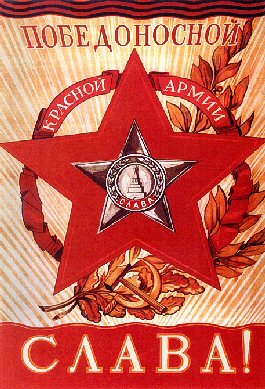
Return to CONTENTS PAGE
Soviet propaganda image stolen from http://www.reichslieder.com/reichslieder_Tshirts_150.html.